If you are new to planning events - or even if you're not - the terminology around seating styles can feel a little daunting. Do you seat everyone classroom style? Around one large table? And what is cocktail seating? Whether it’s a large-scale event or a small meeting, the style of seating can have a big impact on the atmosphere of the room. If you want to encourage your guests to talk then smaller round tables in a cabaret or banquet style can help keep conversation flowing. If you need to communicate a message to a large number of delegates then theatre style will allow you to command the room and hold everybody’s focus. For smaller meetings, boardroom, U-shape and hollow square seating offer a setting where everyone can easily communicate.
When you start to search for your next event venue, consider the seating arrangement style that you require as this could help you to filter out certain venues and narrow your search. Many venues can show you photo examples of the different ways their spaces can be set up, making it even easier for you to visualise your event. Don’t forget to check the capacities for your chosen seating style, as different setups will impact the maximum number of attendees you can have in the room.
To help you plan your event to perfection, we have put together the ultimate guide to event seating, including a definition of each style and what type of event or meeting it works best for.
Banquet seating

Venue: Asia House, Marylebone
What is banquet seating? Typically round tables that seat 8-10 guests. Banquet style seating is a popular choice for large scale events that want to encourage attendees to talk to each other, as the round table allows everyone to be a part of the conversation. When planning an event with banquet seating, keep your centrepieces small or low so you don’t cause a visual blocker in the middle of the table.
Works well for: Weddings, seated lunches or dinners.
Pros: Allows your guests to speak to one another.
Cons: Guests can’t mingle outside of their table easily, so you may want to consider adding in a cocktail or networking hour to allow guests to wander.
Auditorium/theatre style seating
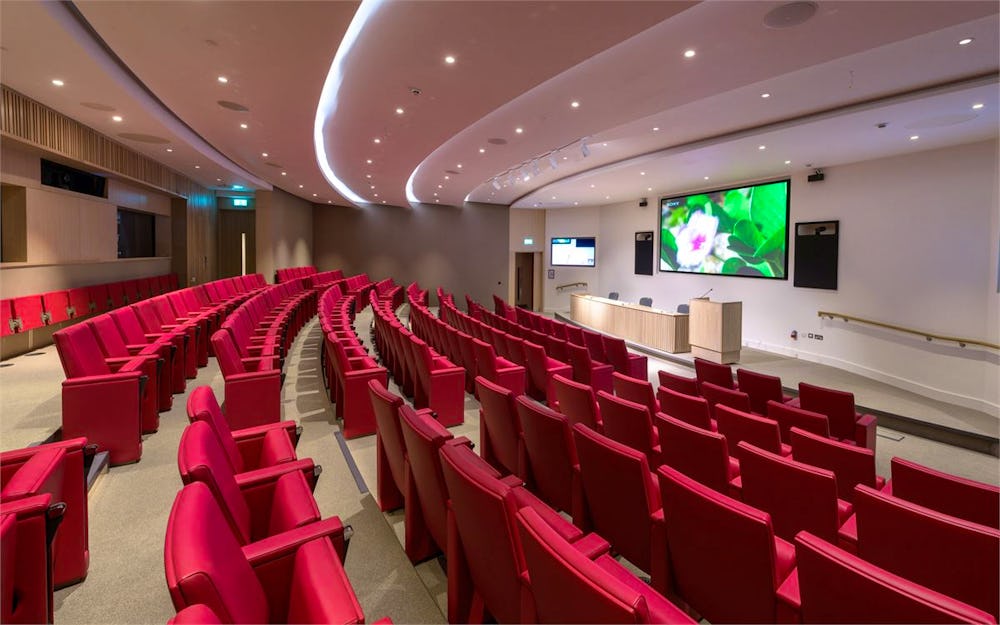
Venue: IET London: Savoy Place, Covent Garden
What is auditorium/theatre style seating? Auditorium or theatre style seating is exactly as it sounds, tiered seating that would typically be found in a theatre. This seating is angled towards a focal point such as a stage or a big screen, making it a perfect choice if you are looking to entertain or present to an audience. Large conferences that don’t require audience participation can work well with this seating setup.
Works well for: Lectures, product launches and presentations.
Pros: Tiered style seating allows every attendee to have a clear view and allows for larger audiences.
Cons: Doesn’t work well for events that require note taking.
Cocktail style seating
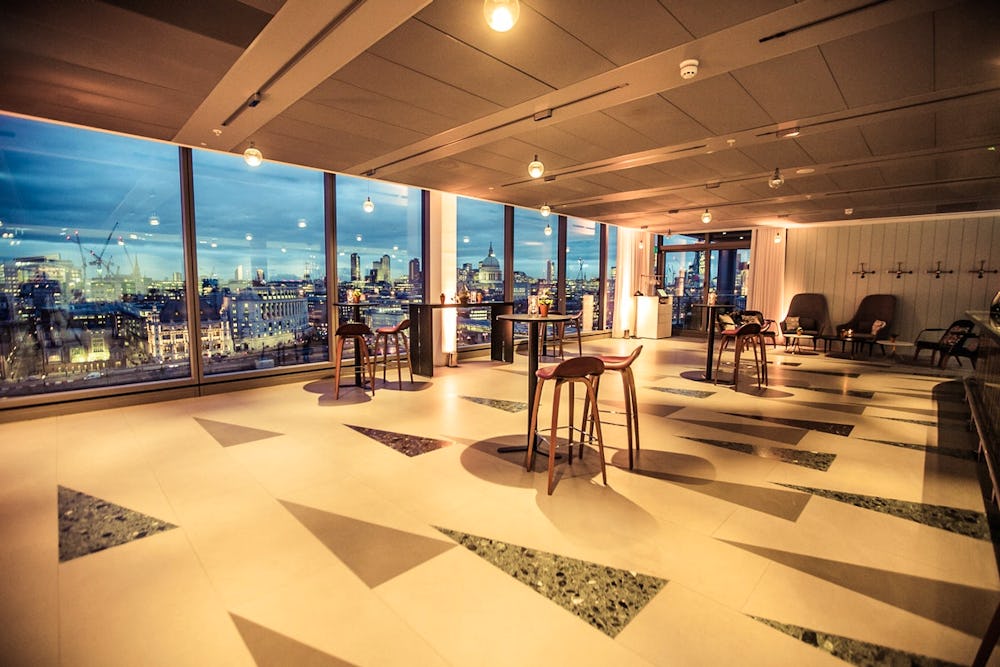
Venue: Sea Containers Events, South Bank
What is cocktail style seating? Cocktail style seating actually has very limited seats - it is where the space is mostly kept free from tables and chairs, with possibly a small number of high tables and stool-style seats. Cocktail style is a layout that allows your guests to mingle and move around the room, as the name suggests, it is perfect for a cocktail hour or for a standing event where canapes are served.
Works well for: Parties, drinks receptions, networking events.
Pros: Allows your guests to speak to one another and to move around the room.
Cons: Limits the style of food you can serve, opt for small bites and canapes.
Classroom seating

Venue: Invision Suites at the Congress Centre, Bloomsbury
What is classroom seating? Classroom seating is as it sounds - tables and chairs set into rows facing a speaker or a presentation screen. If you are planning an informative event and you want your delegates to make notes then the classroom style lends itself well. Just remember to provide pens, paper and any other equipment needed to make the most of this set-up.
Works well for: Seminars, informative presentations.
Pros: Allows note-taking and gives each attendee a clear view of the event.
Cons: Audience participation may be stilted with the teacher-student style setting
Cabaret seating
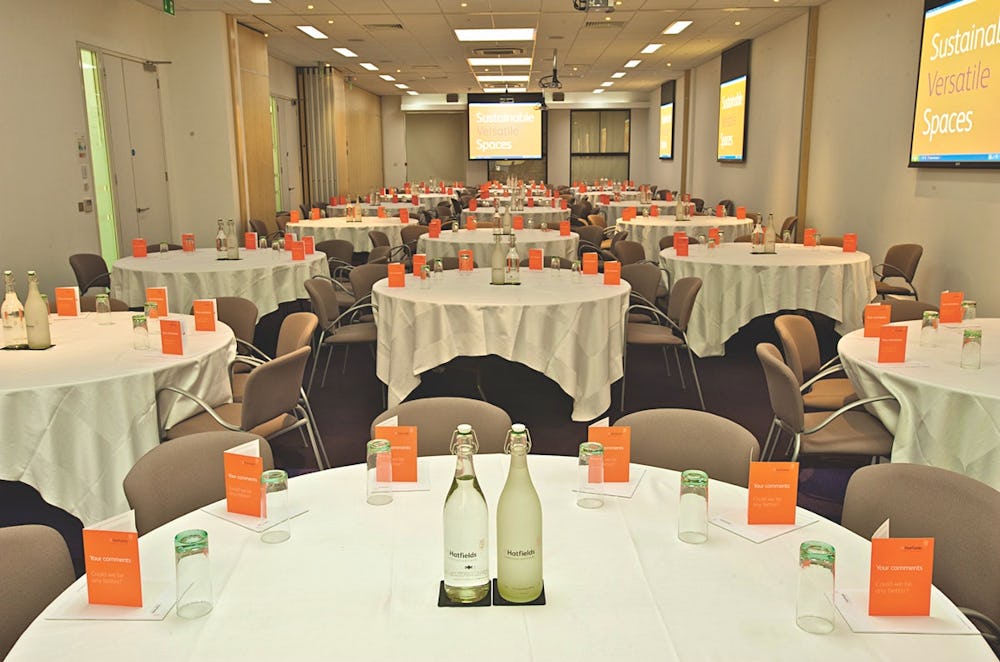
Venue: 15Hatfields, South Bank
What is cabaret seating? Cabaret seating is similar to the layout of banquet seating, but while banquet seating’s core goal is to facilitate a seated lunch or dinner, cabaret seating ensures each seat has a clear view of the stage/speaker at the front of the room. No chairs will have their back to the presenter - much like in a cabaret show.
Works well for: Presentations, entertainment and product launches.
Pros: Each guest has a clear view of the speaker.
Cons: Mingling between attendees is mostly limited to those on their table.
Family style seating
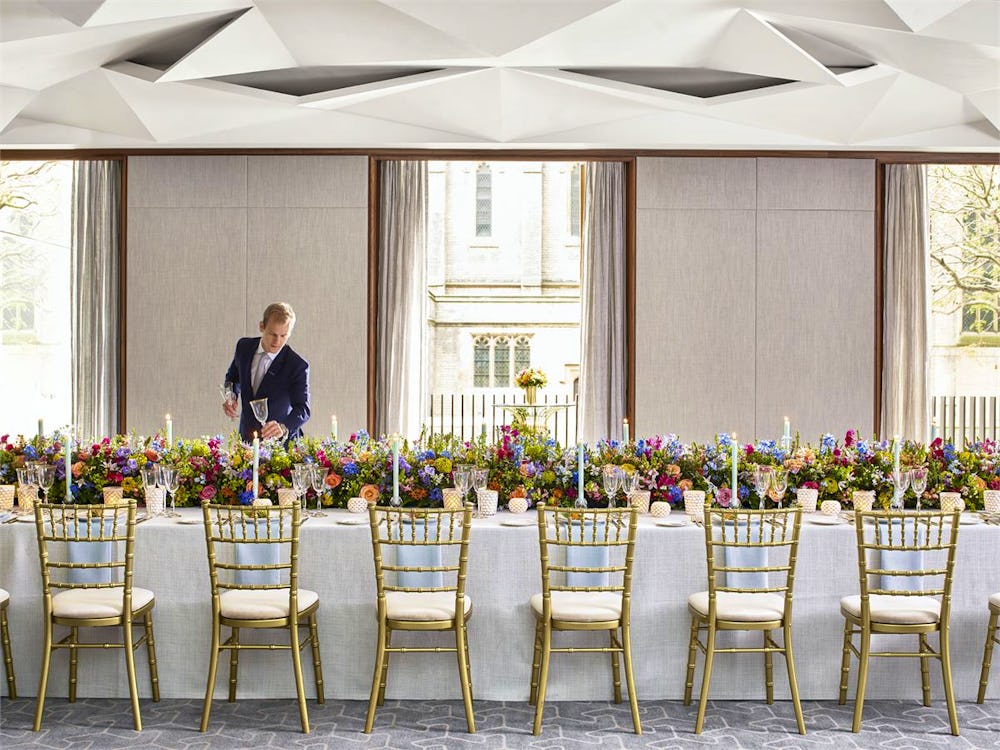
Venue: The Berkley, Knightsbridge
What is family-style seating? Family style seating is long tables set up, often with food served “family-style” along the tables. This seating style has been popular for weddings in the States for many years and has gained popularity in the UK events sector because of its visual appeal - it looks great in photographs.
Works well for: Weddings and banquets.
Pros: Looks great in photographs.
Cons: Guests have limited interaction with each other.
U-shape seating
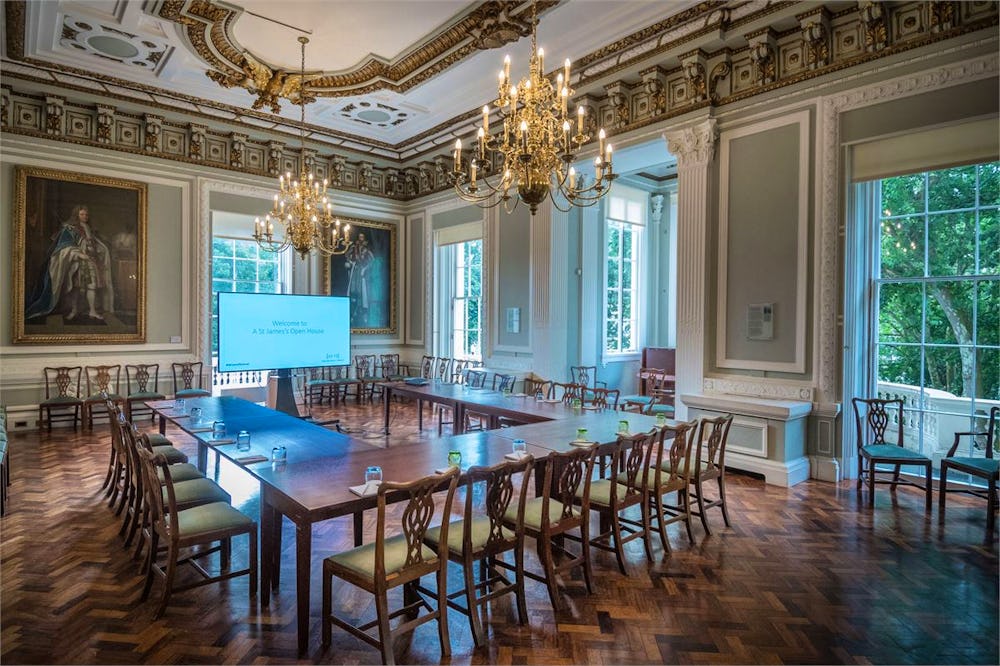
Venue: 10-11 Carlton House Terrace, St James's
What is U-shape seating? U-shaped seating is tables arranged in a U-shape with seats around the outside. This seating style gives space for a standing speaker, while the U-shape encourages the delegates to all speak and interact as a team.
Works well for: Workshops, presentations that require audience participation
Pros: Guests are all facing each other and easily can participate
Cons: Requires a lead speaker or meeting host to anchor the meeting
Hollow square seating

Venue: De Morgan House, Bloomsbury
What is hollow square seating? Similar to u-shape seating, hollow square seating is an enclosed square with chairs around. This style of seating allows for conversation, collaboration and note taking so it’s ideal for workshops and team meetings.
Works well for: Workshops and small meetings.
Pros: Allows plenty of audience participation and teamwork.
Cons: May require a meeting lead to chair and control the meeting.
Now you have chosen a seating style, start exploring our list of event venues that would be perfect for your next meeting, party or conference.